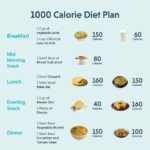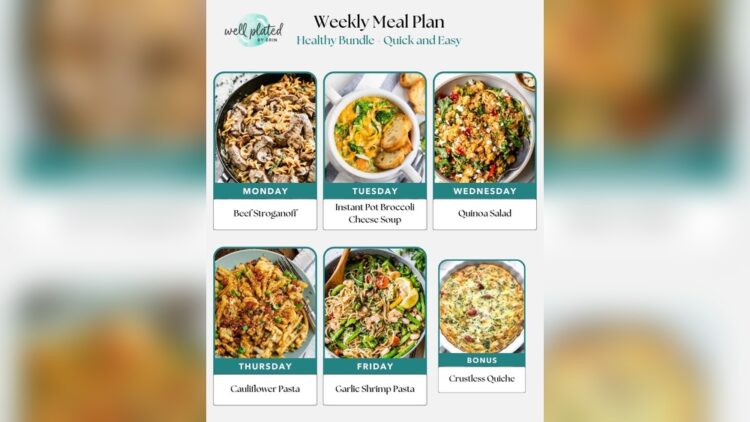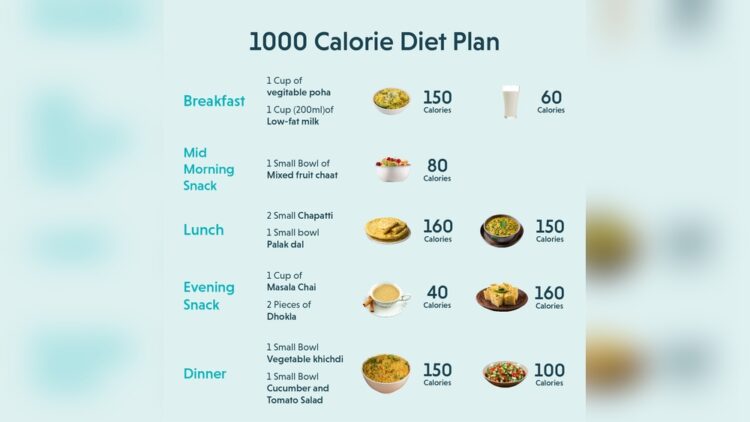Rice can aid in weight loss due to its low calorie and high fiber content. In addition, it can help control hunger and prevent overeating, making it a healthy option for those looking to shed pounds.
Rice has long been a staple in many cultures and is loved for its versatility and taste. However, when it comes to weight loss, it’s often seen as a food to avoid. But is rice really the enemy when it comes to shedding those extra pounds?
The answer might surprise you. Contrary to popular belief, rice can actually be a valuable tool in your weight loss journey. With its low calorie content and high fiber content, rice can help you feel full and satisfied without packing on the pounds. This is because fiber takes longer to digest, keeping you fuller for longer periods of time. Additionally, rice can help control hunger and prevent overeating. Its complex carbohydrates provide a steady source of energy, which can curb cravings and promote healthy eating habits. By choosing whole grain or brown rice varieties, you can reap even more benefits from this humble grain. So, next time you’re planning your meals, don’t be quick to dismiss rice. With its weight loss-friendly properties, it can be a nutritious and filling addition to your diet. Just remember to practice portion control and pair it with plenty of vegetables and lean protein for a well-rounded and balanced meal.
1. The Benefits Of Rice For Weight Loss
Rice can be an effective ally for weight loss, thanks to its low calorie content and high fiber levels. Including rice in your diet can help you feel fuller for longer, preventing overeating and promoting a healthy, sustainable weight loss journey.
Rice, a staple food item consumed by millions worldwide, is often associated with weight gain. However, when included in a well-balanced diet, rice can actually aid in weight loss. Let’s explore the various ways rice can be beneficial for shedding those extra pounds.
1.1 Low Calorie Content
Rice is an ideal choice for weight loss due to its low calorie content. With just around 200 calories per cup, it can provide a satisfying meal without tipping the scales. Opting for whole grain rice varieties, such as brown rice, can further increase the nutritional value. These types of rice contain more fiber and nutrients, making them a healthier choice compared to refined white rice.
1.2 High Fiber Content
Fiber plays a crucial role in weight loss as it helps keep you full for longer periods. Rice, particularly brown rice, is a good source of dietary fiber. High in insoluble fiber, it aids digestion and helps prevent constipation. This increased fiber intake can contribute to a reduced calorie consumption, ultimately leading to effective weight loss. Additionally, the fiber content in rice can help regulate blood sugar levels, keeping cravings at bay.
1.3 Source Of Essential Nutrients
Contrary to popular belief, rice is not just empty calories. This versatile grain is packed with essential nutrients that support overall health. Brown rice, for example, is rich in B vitamins, magnesium, and phosphorus. These nutrients are crucial for energy production, proper nerve function, and bone health. By including rice in your weight loss journey, you can ensure that your body receives the necessary nutrients while shedding excess weight.
2. Types Of Rice For Effective Weight Loss
When it comes to weight loss, choosing the right type of rice can make a significant difference. Brown rice, wild rice, and black rice are three varieties that can help you achieve your weight loss goals. These types of rice are not only delicious but also packed with essential nutrients and lower in calories compared to white rice. Let’s take a closer look at each type:
2.1 Brown Rice
Brown rice is a whole grain that has not been stripped of its bran and germ, making it higher in fiber and nutrients. This type of rice is well-known for its nutty flavor and chewy texture. Here are some of the benefits of incorporating brown rice into your weight loss diet:
- Brown rice is rich in dietary fiber, which promotes a feeling of fullness and helps control appetite.
- It has a lower glycemic index than white rice, which means it doesn’t cause a rapid spike in blood sugar levels, helping to maintain a stable energy level.
- Brown rice is also an excellent source of vitamins and minerals, such as magnesium, selenium, and B vitamins, which play a crucial role in energy metabolism.
2.2 Wild Rice
Wild rice is not actually rice, but a type of seed harvested from aquatic grass. It has a unique taste and a chewy texture. Here are some reasons why wild rice can be beneficial for weight loss:
- Unlike white rice, wild rice is rich in protein, which helps to increase satiety and preserve lean muscle mass during weight loss.
- It is also a good source of essential minerals like zinc, phosphorus, and manganese, which are important for overall health and metabolism.
- Wild rice has a low calorie and fat content compared to white rice, making it a healthier choice for weight management.
2.3 Black Rice
Black rice, also known as “forbidden rice,” has a distinct deep purple color and a slightly sweet flavor. This variety of rice offers numerous health benefits and can be a valuable addition to your weight loss journey. Here’s why:
- Black rice is packed with antioxidants, such as anthocyanins, which have anti-inflammatory and anti-obesity properties.
- It is rich in fiber, which aids digestion, promotes a feeling of fullness, and helps regulate blood sugar levels.
- Black rice is a good source of iron, essential for carrying oxygen throughout the body, and magnesium, which plays a role in energy production and muscle function.
3. Rice-based Meal Plans For Weight Loss
When it comes to weight loss, incorporating rice into your meal plans can be a smart and tasty choice. Rice is a versatile and nutritious grain that can be enjoyed in various ways while aiding in weight loss. In this blog post, we will explore three rice-based meal plans that are perfect for promoting weight loss and maintaining a healthy lifestyle.
Rice And Veggie Bowl
The rice and veggie bowl is a simple yet filling meal that provides your body with essential nutrients and keeps you satiated for longer. To create this meal, start by cooking a serving of brown rice according to package instructions.
Next, prepare a variety of colorful vegetables such as bell peppers, broccoli, carrots, and snap peas. Sauté them lightly in olive oil until they are tender yet still crisp. Add your choice of seasoning or herbs to enhance the flavor.
Once the vegetables are cooked, combine them with the cooked rice in a bowl. Feel free to top your rice and veggie bowl with a drizzle of low-sodium soy sauce or a squeeze of fresh lemon juice for an extra burst of flavor.
Rice And Protein Stir-fry
A rice and protein stir-fry is another excellent option for those looking to shed some pounds. Start by cooking a serving of brown rice and set it aside.
Next, choose your desired source of lean protein, such as skinless chicken breast, tofu, or shrimp. Cut the protein into small pieces and cook it in a non-stick pan with minimal oil. Season with salt, pepper, and any other spices you prefer.
Once the protein is cooked, add your favorite vegetables like broccoli, mushrooms, and bell peppers to the pan. Sauté them until they are tender-crisp.
Finally, combine the cooked rice with the protein and vegetable mixture and stir-fry for a few minutes to allow the flavors to meld together. Enjoy a delicious and protein-packed rice stir-fry that is both satisfying and beneficial for weight loss.
Rice Salad With Lean Proteins
A rice salad with lean proteins is a refreshing and nutritious meal option that can aid in weight loss. Start by cooking a serving of brown rice and letting it cool.
Next, assemble a variety of colorful vegetables such as cherry tomatoes, cucumbers, and leafy greens. Add your choice of lean protein, such as grilled chicken or fish.
Mix the cooked rice with the vegetables and lean protein in a bowl. For added flavor, drizzle a light dressing made with olive oil and lemon juice or balsamic vinegar over the salad.
Enjoy a satisfying and nutrient-rich rice salad that will keep you feeling full and energized throughout the day.
4. Tips For Incorporating Rice Into A Weight Loss Diet
4. Tips for Incorporating Rice into a Weight Loss Diet
If you’re looking to lose weight without depriving yourself of your favorite foods, incorporating rice into your diet can be a great strategy. Rice is low in fat and a good source of energy, making it a satisfying option for those seeking to shed a few pounds. However, it’s important to keep a few tips in mind to make rice a healthy addition to your weight loss plan.
4.1 Portion Control
One of the keys to incorporating rice into a weight loss diet is practicing portion control. While rice is a nutritious grain, it’s important to remember that it is rich in carbohydrates, and consuming too much can hinder weight loss efforts. To maintain a healthy balance, you can:
- Use a measuring cup to accurately portion out the amount of rice you cook.
- Opt for smaller plates and bowls to make your rice servings appear more substantial.
- Fill up on a variety of veggies and protein-rich foods to ensure you’re getting a well-rounded meal.
4.2 Choosing The Right Cooking Technique
The way you cook your rice can impact its nutritional value and its effect on weight loss. Consider these tips for choosing the right cooking technique:
- Steaming: Steaming rice helps retain more nutrients compared to other cooking methods, such as boiling. This method also results in fluffy, separate grains of rice that are delicious and satisfying.
- Boiling: Boiling rice is a simple and popular method, but it can lead to loss of nutrients. To preserve the nutrients, you can cook rice with minimal water, and use the excess water for gravies or soups.
- It’s important to avoid adding excessive oil or butter during the cooking process to keep your rice dish light and healthy. Leaning towards the use of herbs and spices for flavoring is a wise choice.
4.3 Pairing Rice With Healthy Ingredients
To elevate the nutritional value of your rice dish while supporting weight loss, consider pairing it with healthy ingredients:
- 1
- Adding lean proteins:
- Grilled chicken or turkey breast
- Tofu or tempeh
- Legumes such as lentils or chickpeas
- 2
- Incorporating a variety of vegetables:
- Leafy greens like spinach or kale
- Colorful veggies such as bell peppers, carrots, or broccoli
- Mushrooms and zucchini for added texture
- 3
- Using healthy fats and oils:
- Avocado slices
- Extra virgin olive oil
- Nuts or seeds for added crunch
By incorporating these tips into your weight loss journey, you can enjoy rice as a satisfying and healthy part of your diet.
5. Managing Rice Intake For Long-term Weight Loss
When it comes to weight loss, managing your rice intake plays a crucial role in achieving long-term success. While rice is a staple food for many cultures, it can be high in carbohydrates and calories, which can hinder weight loss efforts if not managed properly. In this section, we will explore some effective strategies to help you incorporate rice into your diet while still promoting weight loss.
5.1 Creating A Balanced Meal Plan
Creating a balanced meal plan is essential for long-term weight loss. It ensures that your body receives the necessary nutrients while maintaining a calorie deficit. When incorporating rice into your meals, it’s important to strike a balance between portion size and the inclusion of other nutrient-rich foods. Consider the following tips:
- Incorporate a variety of colorful vegetables into your meals to increase the nutrient density without adding excessive calories.
- Opt for lean protein sources like chicken, fish, tofu, or legumes to provide satiety and support muscle growth.
- Choose whole grain or brown rice instead of refined white rice to benefit from higher fiber content and additional nutrients.
- Include healthy fats such as avocado, olive oil, or nuts in moderation to promote satiety and enhance nutrient absorption.
5.2 Moderation And Monitoring
Moderation and monitoring are key when it comes to managing your rice intake for weight loss. While rice can be a part of a healthy diet, excessive consumption can contribute to weight gain. Consider the following tips:
- Measure your rice portions to avoid unintentionally consuming more than you need. Use measuring cups or a food scale to ensure accurate portion sizes.
- Avoid going back for second servings of rice. Instead, fill your plate with a larger portion of vegetables and lean protein.
- Keep a food diary or use a smartphone app to track your daily calorie intake and ensure you are staying within your weight loss goals.
- Be mindful of portion sizes when dining out or ordering takeout. Restaurants often serve larger portions, so consider sharing a rice dish or asking for a smaller serving.
5.3 Combining Rice With Other Nutrient-rich Foods
Combining rice with other nutrient-rich foods not only enhances the flavor and variety of your meals but also helps ensure a well-balanced diet. By incorporating a variety of food groups, you can increase the overall nutrient content and feel more satisfied after your meals. Consider the following tips:
- Add protein-rich foods such as grilled chicken or tofu to your rice dishes to increase satiety and support muscle growth.
- Mix in colorful vegetables like bell peppers, broccoli, or carrots to boost the fiber and nutrient content of your meal.
- Include healthy fats like sliced avocados or a drizzle of olive oil to add flavor and increase the satiety value of your rice-based meals.
- Experiment with herbs and spices to give your rice dishes a flavorful kick without the need for excessive amounts of oil or salt.
Frequently Asked Questions Of Weight Loss With Rice
Faq 1: Can Rice Help In Weight Loss?
Yes, rice can be a healthy addition to your weight loss diet when consumed in moderation and paired with a balanced meal plan.
Faq 2: Is Brown Rice Better For Weight Loss?
Brown rice is a great choice for weight loss as it is higher in fiber, nutrients, and has a lower glycemic index compared to white rice.
Faq 3: How Much Rice Should I Eat For Weight Loss?
For weight loss, it is recommended to consume around half a cup of cooked rice per meal and to focus on portion control and overall calorie intake.
Conclusion
Rice can be an effective ally in your weight loss journey. Its low calorie and high fiber content helps keep you full for longer, reducing overall calorie intake. Whether you choose white, brown, or wild rice, incorporating it into balanced meals can contribute to a healthier lifestyle.
Remember to pair it with plenty of fresh vegetables and lean protein for optimal results. Enjoy the nourishing benefits of rice while achieving your weight loss goals.
{ “@context”: “https://schema.org”, “@type”: “FAQPage”, “mainEntity”: [ { “@type”: “Question”, “name”: “FAQ 1: Can rice help in weight loss?”, “acceptedAnswer”: { “@type”: “Answer”, “text”: “Yes, rice can be a healthy addition to your weight loss diet when consumed in moderation and paired with a balanced meal plan.” } } , { “@type”: “Question”, “name”: “FAQ 2: Is brown rice better for weight loss?”, “acceptedAnswer”: { “@type”: “Answer”, “text”: “Brown rice is a great choice for weight loss as it is higher in fiber, nutrients, and has a lower glycemic index compared to white rice.” } } , { “@type”: “Question”, “name”: “FAQ 3: How much rice should I eat for weight loss?”, “acceptedAnswer”: { “@type”: “Answer”, “text”: “For weight loss, it is recommended to consume around half a cup of cooked rice per meal and to focus on portion control and overall calorie intake.” } } ] }











Leave a Reply